On May 22, a new contemporary art showcase opened in the heart of Paris. It is in the building of the Bourse de Commerce that more than 10,000 works of art by François Pinault, one of the greatest collectors of contemporary art, are presented. On this occasion, the Bourse de Commerce was restored and transformed by the Japanese architect Tadao Andō, the Nem/Niney and Marca Architects agency, and the Pierre-Antoine Gatier agency. To echo this exceptional opening, we invite you to highlight Tadao Andō who helped breathe new life into this historic monument. Back on Tadao Andō, this architect who makes concrete, a noble material.
A childhood marked by architecture
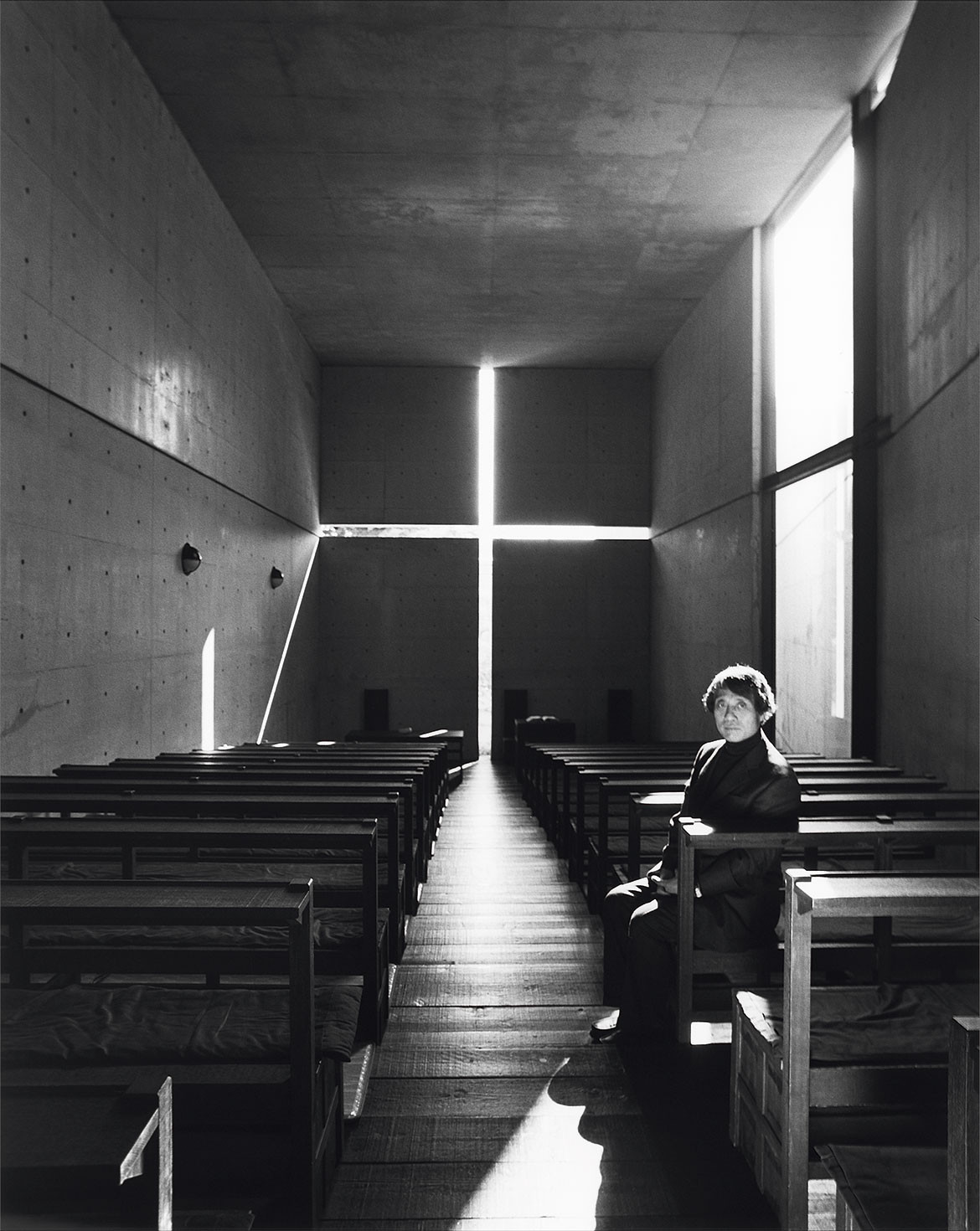
Born in 1941 in Japan, Tadao Andō is an architect who is part of what is known as the critical regionalism style. Its architecture is therefore nourished by local cultural elements. He is one of the leading Japanese architects and one of the greatest representatives of the minimalist movement in contemporary architecture. To understand Tadao Andō's work, it is essential to return to his childhood, marked very quickly by architecture.
He grew up in a working-class district of Osaka, at his grandmother's house. From his childhood, he learned two great precepts that would irrigate his work: rationalism and the spirit of independence. Left to himself, he is used to discovering the work of the artisans of his neighborhood. He discovered the diversity of materials in the field of buildings. This is how his training as an architect began, in a self-taught way. A rare enough fact in Japan to be highlighted here. He also learned architecture through the books he found in booksellers and quickly discovered the work of Le Corbusier.
Sources of inspiration: between travels and encounters
In parallel with his architectural apprenticeship, Tadao Andō embarked on a career as a boxer, at the professional level. From 1965, thanks to his earnings as a boxer, he traveled to Europe, the United States and Africa. In France, he can finally see the architecture of Le Corbusier, which fascinates him completely. He visited the emblematic works of the French architect, such as the Swiss Pavilion of the "Cité internationale de Paris", the "Villa Savoye" in Poissy which, at that time, was falling into ruin, and the "Cité radieuse" in Marseille. His architectural discovery does not stop there. Indeed, he discovers the Cistercian abbeys that will truly inspire him. From then on, he attached great importance to the place of silence in his architecture, which appeared as a space of rest and serenity.
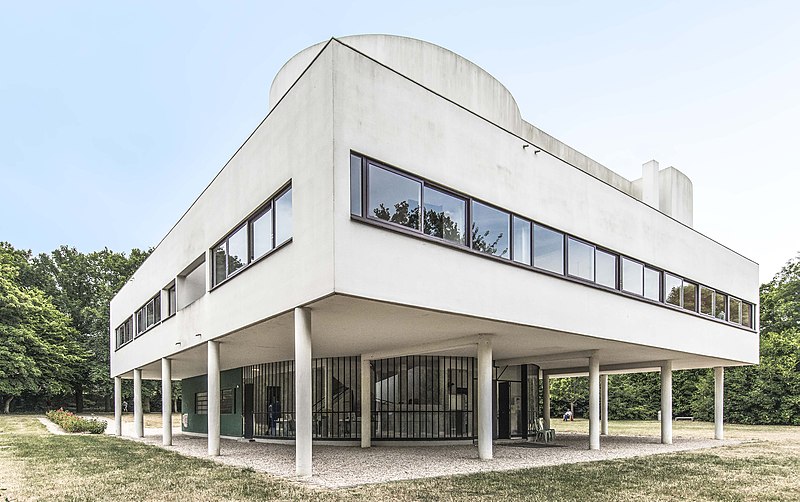
Its architecture was not only nourished by travels, but also by encounters. He frequented artists who belonged to the avant-garde movement of the Japanese group Gutai. He is also interested in Western artists such as Jackson Pollock and Marcel Duchamp.
Architecture to meet the requirements of the city of Osaka
After his many travels, he opened his own workshop in 1969. From the 1970s, he began his first realizations, between small shops and houses, allowing him to develop his own architectural style. The beginning of his career coincided with a population explosion in the city of Osaka. Faced with the significant increase in construction for the population, the urban landscape is becoming more and more heterogeneous, calling into question the serenity of Japanese interiors. In order to break with the external agitation, Tadao Andō seeks in his constructions to establish an environment conducive to calm.
In addition, the architect uses concrete banked, a material that perfectly responds to the problems of the many earthquakes that Japan is experiencing. Through this anti-seismic material, he then develops a language of his own, between geometry and simplicity of forms.
A singular architecture in a spiritual approach
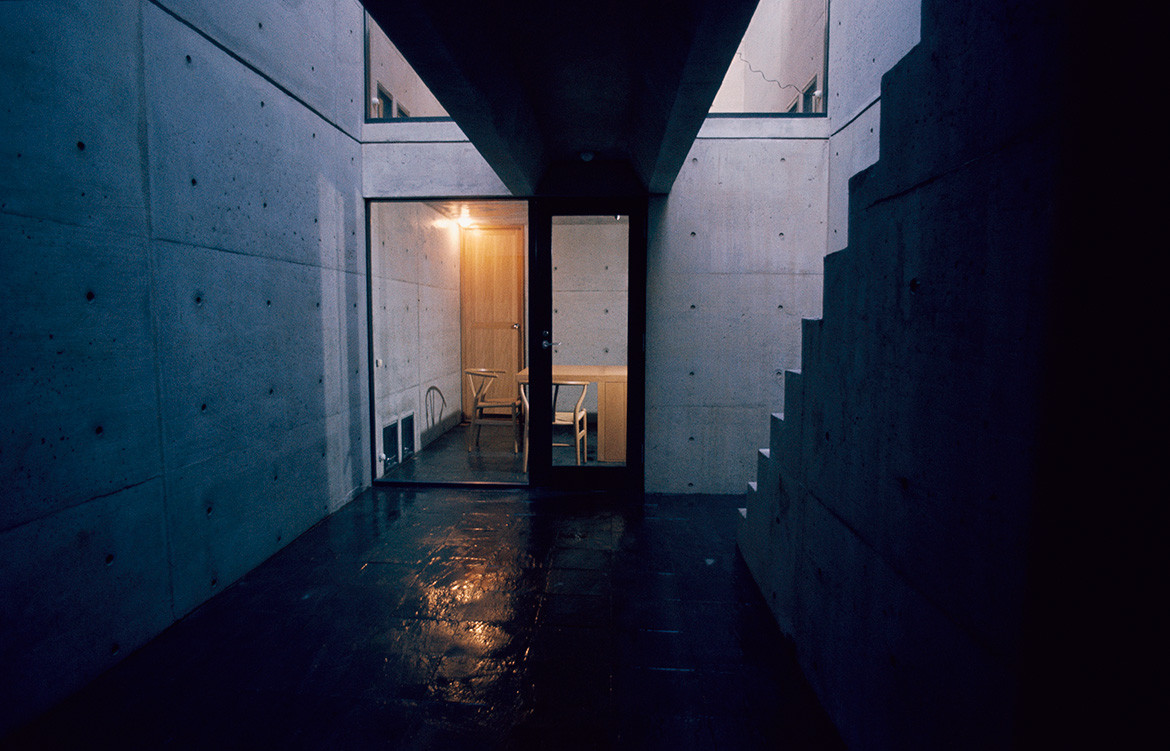
Tadao Andō became known around the world thanks to the "Azuma House", located in Osaka and built between 1975 and 1976. This concrete residential house with exposed holes, is 65 square meters and has two floors. From the outside, only the façade is visible. Isolated among the other houses, it is characterized by blind walls and a patio in the center. Inside, the house unfolds in three segments. The open-air patio is the epicenter of the house. To join the different parties, you have to go out and immerse yourself in the environment. The patio then brings not only light but also a bubble of serenity, always in a contrast effect with the urban hustle and bustle. This house with its refined spaces lays the foundations of the architect's approach: the light, the importance of walls and spaces of division, and the materials used.
Its architecture is built from pure geometry and natural elements. The geometry that highlights the beauty of the volumes brings to his work, an obvious poetic form. This is what we can see in his religious constructions including the "Church of Light", built in 1989, in the northwest of Osaka, in the city of Ibaraki.
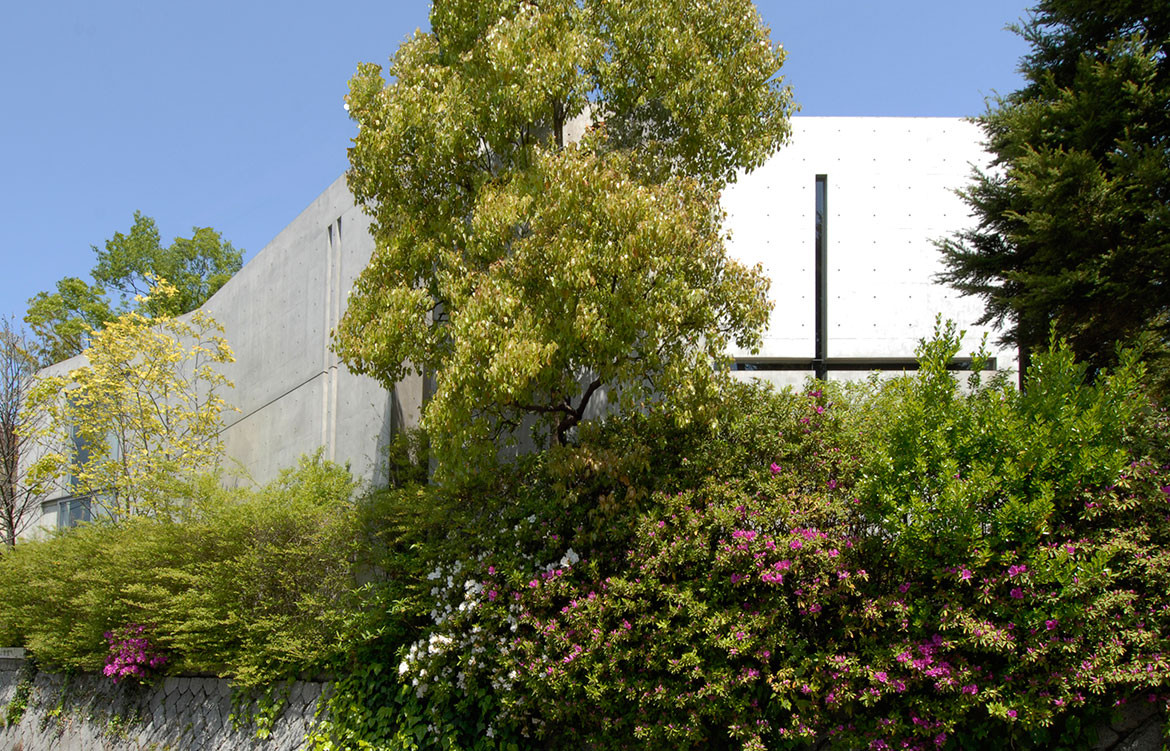
The church, made of concrete and wood, is cubic in shape. We can see a breakthrough in the cross-shaped wall. If, from the outside, the building is extremely sober, inside, this cross pierced by the light completely floods the refined space. Thus, this cross of light sublimates the space in which it is inscribed, bringing an obvious spiritual dimension. In this architectural humility, the light that evolves with the day and the seasons, becomes symbolic. Silence and light are thus architectural elements in themselves.
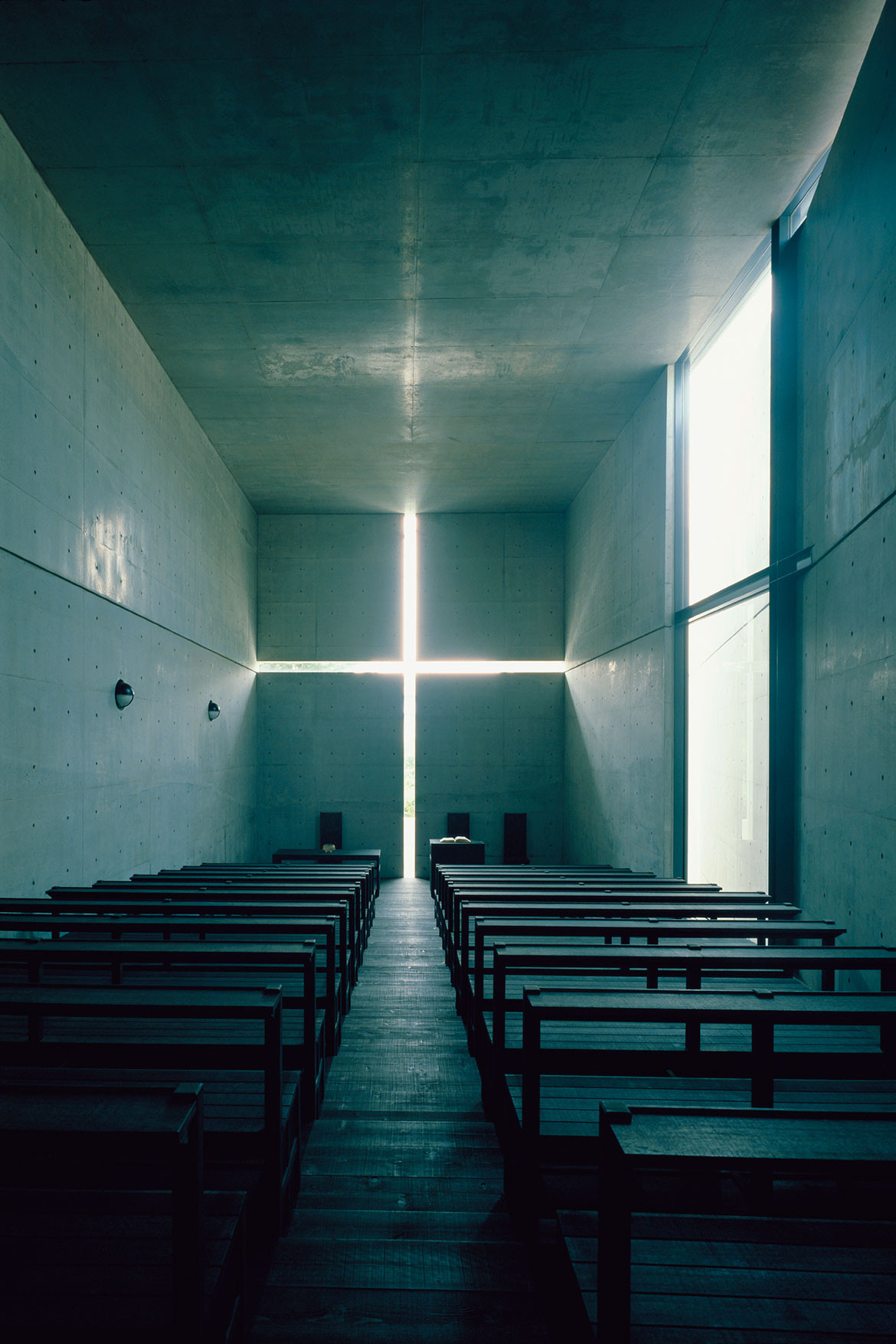
At the crossroads of philosophical influences
The architect plays with spaces and emptiness, shadow and light, creating for the visitor "an experience of space". Beyond the architectural dimension, the artistic language expresses an interiority for those who evolve in these spaces. In this dialogue between interior and exterior, Tadao Andō seeks harmony and balance of the elements. This research is perfectly illustrated with the "Chapel on the water" in Tomamu which dates from 1991. Sublimated by the environment that surrounds it, the building evolves according to time and seasons.
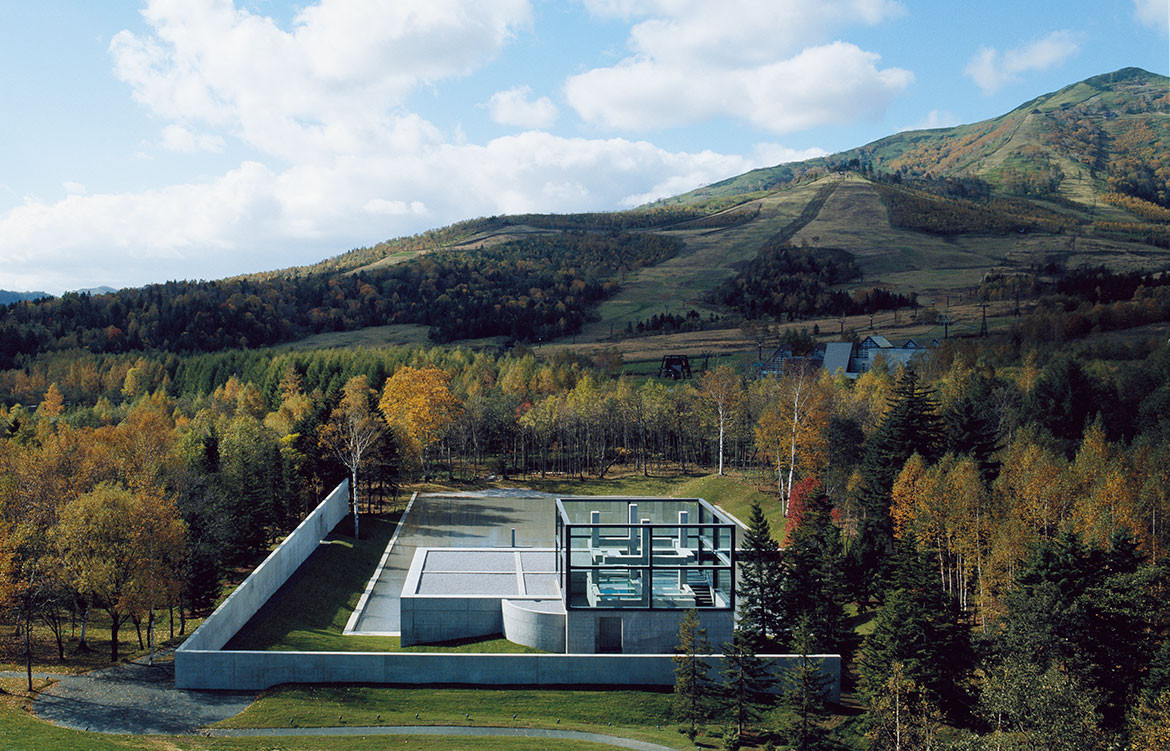
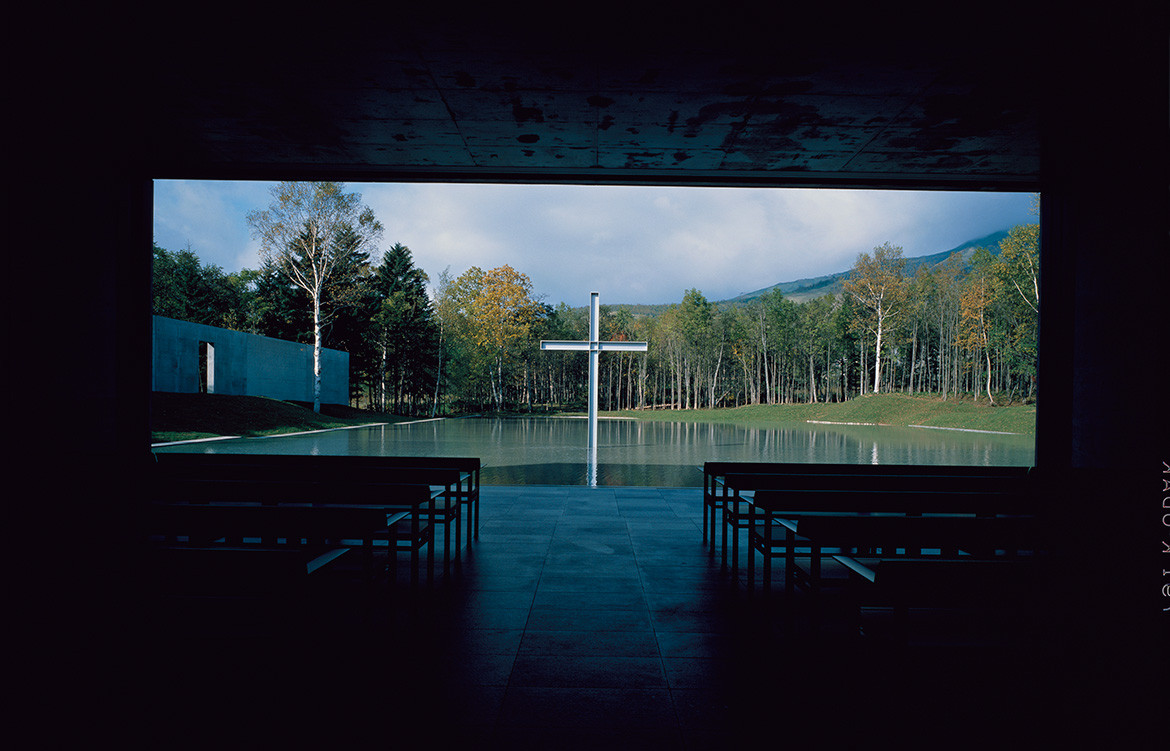
Inside his buildings, he creates complex circulation paths that oscillate between outdoor and indoor space. The geometry of spaces builds paths that lead to contemplation. We thus find the philosophy of Zen and haiku. Haiku is a vertical Japanese poetry that highlights the evanescence of the elements around us. A poetry that gives importance to sensations. In addition, the impermanence and fragility of things, omnipresent in the Shinto tradition, are also key elements in understanding the work of the architect.
Tadao Andō and the Bourse de Commerce
In order to highlight his collection, François Pinault wishes to safeguard and rehabilitate an emblematic monument of Parisian heritage. For this transformation work, the choice of architect Tadao Andō seems obvious.
The history of the Stock Exchange building begins in the thirteenth century. Based on the structure of the Hôtel de Soissons, its architecture bears witness to these successive periods: from the first isolated column in Paris, in the fifteenth century for Catherine de Medici, to the construction of a wheat market in the eighteenth century, then a hall covered in 1812 by a dome of metal and glass to finally become a Bourse de Commerce, from 1885 until 2016. In 2006, the stock exchange was bought by the City of Paris. It becomes a showcase for part of the contemporary art collections of the famous businessman. The venue has 3,000 square meters of exhibition space, a restaurant on the third floor and a studio in the basement to host performances and conferences.
The project took place from June 2017 to February 2020. For this realization, Tadao Andō wanted to bring a contemporary impetus without intervening and distorting the building, classified as a historical monument. In this sense, he realizes a structure within a structure like a nesting trundle. He then takes up the motifs of the circle and simple geometry, motifs that are close to his heart. He thus creates an interior passageway 91 meters long and 9 meters high, allowing to observe the works. In this living space, we are offered a lively dialogue between architecture and its context, contemporary creation and heritage heritage, past, present and future, and finally, between the collection and the visitor. The Bourse de Commerce – Pinault Collection became Tadao Andō's most important achievement in France.
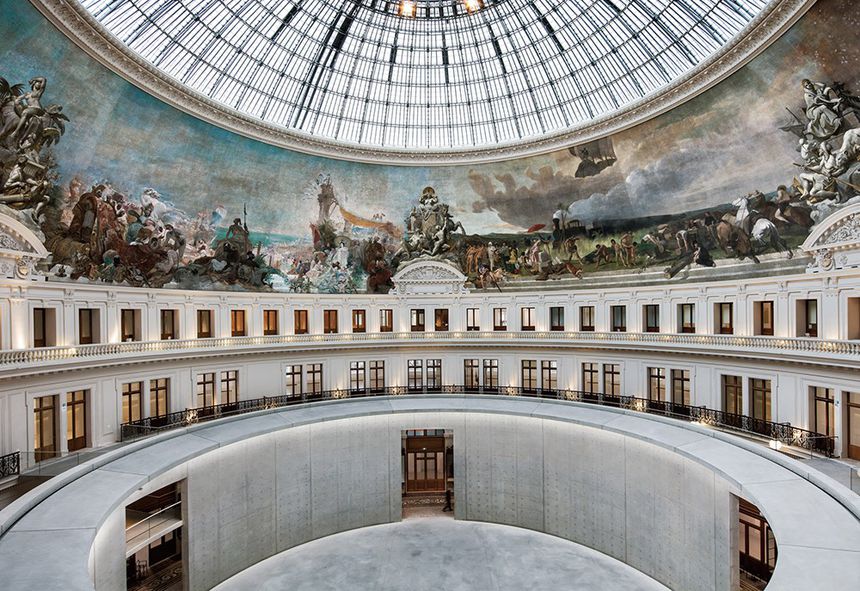
An international influence
It would be difficult to list all the work of Tadao Andō as it is dense and international. He has led achievements around the world. The Bourse de Commerce is, at this date, his last achievement. As one of the world's most renowned architects, he has received prestigious awards throughout his career: first the Alvar Aalto Medal in 1985, then ten years later, the Carlsberg Architectural Prize and the Pritzker Prize. In 2002, he won the Kyoto Prize, and in 2018, the Centre Pompidou devoted a retrospective to him. The style of the architect is not only known in the world, but it is also very recognizable. The concrete banked, the light and the pattern of the circle are elements that gravitate around his universe.
The architect then says that: "The creation of space in architecture is simply the condensation and purification of the power of light. In my work, light is always a critical element in the staging of the whole space, because it allows you to create unexpected visual effects."



















